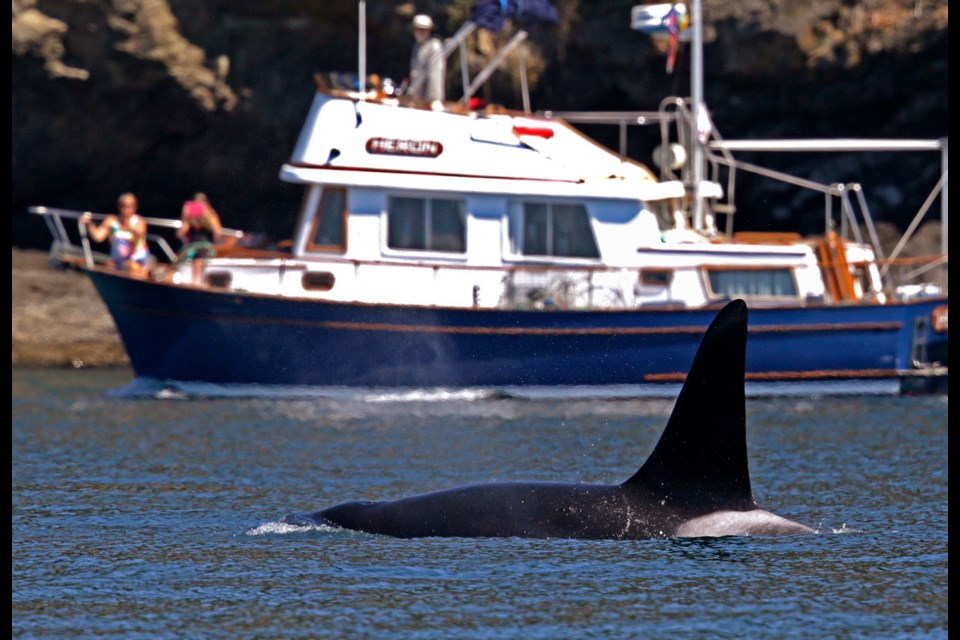SAN JUAN ISLANDS, Washington — Against a backdrop of rocky bluffs, a pod of orcas jumped out of the emerald waters of the Puget Sound before splashing their massive black-and-white bodies back into the water.
Shadowing the whales on a recent afternoon were several recreational and commercial whale-watching boats that ferry people out to watch the orcas breach, one of nature’s most impressive spectacles. But the combination of boats and whales has state and federal authorities worried now that the southern resident killer whales have four new calves.
So authorities are sending out orca patrols, asking the boats to give the sea mammals enough space.
By law, boaters are required to stay 200 yards (183 metres) parallel from the orcas and give them 400 yards (366 metres) in front to create conditions that will help the whales restore their numbers.
“We approximately do 60 shifts per summer solely dedicated to whale protection,” said Sgt. Russ Mullins of the Washington state department of Fish and Wildlife.
Canada’s Department of Fisheries and Oceans also conducts patrols dedicated to orcas, and has some currently underway, said spokeswoman Leri Davies. She said Canadians sometimes collaborate with their American counterparts in following up orca-related issues in Canadian or American waters, and occasionally attend the same whale-watching industry meetings.
The southern resident killer whales are endangered, and have lost about 20 per cent of their population since the 1990s. Dwindling food sources and contamination are two things scientists blame for their decreasing numbers.
Patrolling officers mostly warn boaters, opting to educate skippers about the laws protecting the marine mammals. The law enforcement presence in the Puget Sound is being funded by a $1 million National Oceanic and Atmospheric Administration grant.
Boats present a whole host of other problems for the whales. Noise from motors interferes with the orcas’ echolocation, which they use to find salmon to eat.
“When boats are near the whales, they can change their behaviour. They feed less often. They swim in less direct patterns,” said Lynne Barre, an orca expert for the NOAA.
Other research shows the orcas talk louder when boats are around.
The Whale Museum in Friday Harbor estimates that about half a million people come to these waters to watch whales every year.
While the commercial whale-watching industry is growing, authorities say they’ve been doing a good job of self-policing.
“We knew you can’t have whale-watching if you have no whales,” Michael Harris, executive director of the Pacific Whale Watch Association, which has 34 members.
So the main focus for officers has been recreational boaters, “who either don’t know what the rules are, they don’t know the impact they could potentially have or they don’t care,” Mullins said.
With files from Jeff Bell, Times Colonist



